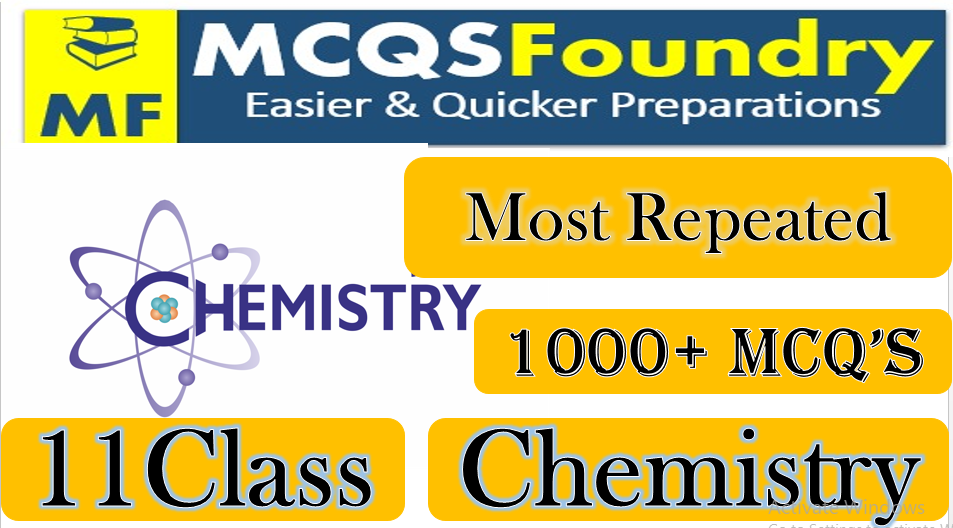We are providing accurate Some Basic Concepts of Chemistry Class 11 Mcq with Answers. Firstly You can read First year some basic concepts of chemistry class 11 mcq with answers pdf.

| Chemistry Mcq Questions For Class 11 Pdf Download Chapter 1 | Chemistry Mcq Questions For Class 11 Pdf Download Chapter 2 |
| Chemistry Mcq Questions For Class 11 Pdf Download Chapter 3 | Chemistry Mcq Questions For Class 11 Pdf Download Chapter 4 |
| Chemistry Mcq Questions For Class 11 Pdf Download Chapter 5 | Chemistry Mcq Questions For Class 11 Pdf Download Chapter 6 |
| Chemistry Mcq Questions For Class 11 Pdf Download Chapter 7 | Chemistry Mcq Questions For Class 11 Pdf Download Chapter 8 |
| Chemistry Mcq Questions For Class 11 Pdf Download Chapter 9 | Chemistry Mcq Questions For Class 11 Pdf Download Chapter 10 |
| Chemistry Mcq Questions For Class 11 Pdf Download Chapter 11 | Chemistry Mcq Questions For Class 11 Pdf Download Chapter 12 |
| Chemistry Mcq Questions For Class 11 Pdf Download Chapter 13 | Chemistry Mcq Questions For Class 11 Pdf Download Chapter 4 |
Chapter 11
Reaction Kinetics
1. Larger the surface area of the reactant molecules:
- Lower will be the rate of reaction
- Higher will be the rate of reaction
- The rate of reaction remains unaffected
- The rate may increase or decrease
2. In zero order reaction, the rate is independent of:
- Temperature of reaction P ast P
- Concentration of reactants
- Concentration of product
- None of these
3. The order of reaction of O3 + NO → NO2 + O2 is:
- One
- Two
- Three
- Zero
4. Decomposition of nitrogen penta oxide has order of reaction:
- Zero
- First
- Second
- Third
5. A substance which retards the rate of reaction is called:
- Inhibitor
- Activator
- Oxidant
- Auto-Catalyst
6. The minimum amount of energy required for an effective collision is called:
- Activation energy
- Internal energy
- Translational energy
- None
7. The catalyst used for the reaction HCOOH → H2+CO2 is:
- Copper
- Alumina
- Silica
- Iron
8. Sugar solution hydrolyses to glucose and fructose in the presence of enzyme:
- Urease
- Invertase
- Zymase
- None
9. When a reaction proceeds in sequence of steps, the overall rate is determined by:
- Faster step
- Slowest step
- Molecularity of all steps
- Order of different step
10. A substance which makes the catalyst more effective is called:
- Inhibitor
- Retarder
- Promoter
- Auto Catalyst
11. If 75% of any given amount of radioactive element disintegrates in 60 minutes the half life of radioactive element is:
- 20 minutes
- 30 minutes
- 40 minutes
- 25 minutes
12. with increase of 10°C temperature, the rate of reaction becomes double. This increase in rate of reaction is due to:
- Decrease in the activation energy of reaction
- Decrease in number of collision between the molecules
- Increase in activation energy of reactants
- Increase in number of effective collision
13. The unit of rate constant for zero order reaction is:
- dm3 S-1
- mole dm3S-1
- dm2 mol ‘s-1
- mole S-1
14. If the rate equation of reaction 2 A + B → Product
Rate = k [A]2 [B] and A is present in large excess, then order of reaction is:
- 1
- 2
- 3
- None of these
15. The half life period of 146 Cis 5760 years. 100mg of sample of 146Cis will reduce to 25mg in:
- 11520 years
- 2880 years
- 57600 years
- 5760 years
16. The energy of activated complex is:
- Greater than the reactants and products
- Less than the reactants and products
- Equal to the products
- Equal to the reactants
17. Indicate the enzyme which catalyses the following: C6H12O6 →2C2H5OH + 2CO2
- Diastase
- Zymase
- Urease
- Invertase
18. The rate of chemical reaction depends upon the nature of reactants because?
- Some of the reactants have high boiling point
- Some of the reactants are colored
- Energy of activation differs from one reaction to another
- Some of the reactants are solid at room temperature
19. Which of following is an example of homogenous catalysis?
- Formation of ghee from oil
- Formation of SO3 in contact process
- Hydrolysis of ester Hydrolysis
- Formation of NH3 in Haber process
20. In zero order reaction the rate is independent of:
- Temperature of reaction
- Concentration of products
- Concentration of reactants
- None of these
21. Hydrolysis of Tertiary butyl bromide has order of reaction:
- First order
- Pseudo first order
- Second order
- Third order
22. A substance which decreases the efficiency of a catalyst is called:
- Promoter
- Activator
- Poison
- Auto catalyst
23. Photo chemical reactions are:
- First order
- Third order
- Second order
- Zero order
24. The rate of chemical reaction is independent of:
- Molecularity
- Temperature
- Nature of reactants
- Concentration of reaction
25. The unit of rate constant for zero order reaction:
- mol dm-3s-1
- mol-1dm3s-1
- dm3s-1
- mol s-1
26. The energy of activation for a reaction by using catalyst is:
- Increased
- Decreased
- Not changed
- Moderate
27. Specific rate constant is equal to rate of reaction when concentrations of reactants are:
- Zero
- Four
- Three
- Unity
28. The equation K = Ae-EaRT is called:
- Rate law
- Rate equation
- Arrhenius equation
- General gas equation